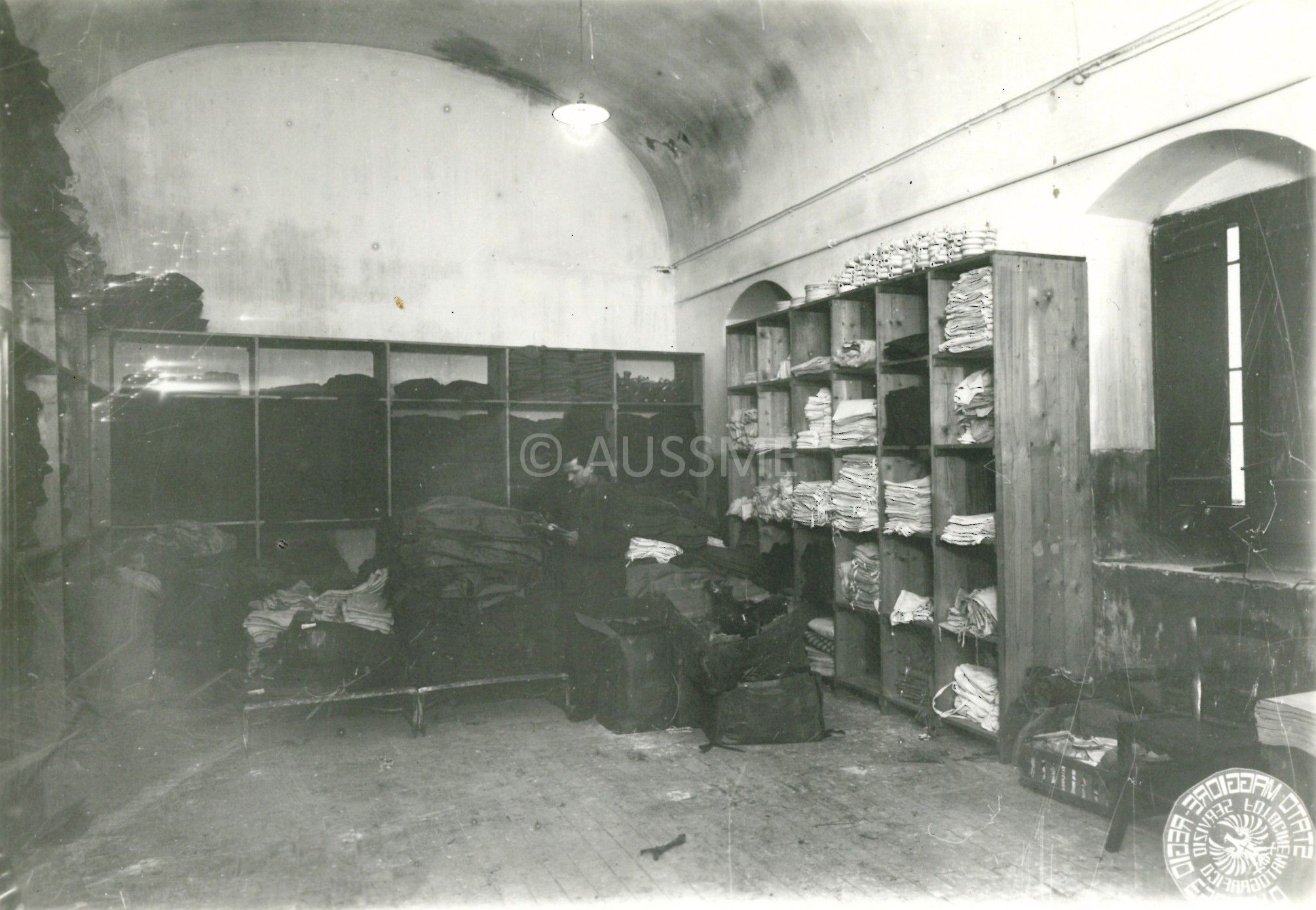Sheet by: Isabella Insolvibile

Warehouse of hospital field no. 204 in Altamura (BA) - AUSSME Archive, Fototeca 2 Guerra Mondiale Italia 507/639
General data
Town: Altamura
Province: Bari
Region: Puglia
Location/Address: Scuola IV Novembre (viale Martiri del 1799), Istituto Regina Margherita (Corso Federico II di Svevia) - Altamura
Type of camp: Military hospital
Number: 204
Italian military mail service number: 3450
Intended to: Officers; NCOs; Troops
Local jurisdiction: IX Army Corps
Railroad station: Altamura
Accommodation: military quarters
Capacity: 480
Operating: from 12/1942 to 07/1943
Commanding Officer: Major Florindo Scardapane (Dicember 1942 – April 1943); Major Raffaele Episcopo (May – June 1943)
Brief chronology:
December 1942: Allied PoWs were taken to Altamura hospital
Summer 1943: the hospital was evacuated, and the PoWs were transferred elsewhere.
Allied prisoners in the Altamura camp
| Date | Generals | Officers | NCOs | Troops | TOT |
| 31.12.1942 | 11 | 12 | 108 | 131[1] | |
| 31.1.1943 | 8 | 13 | 131 | 152 | |
| 28.2.1943 | 6 | 21 | 148 | 175[2] | |
| 31.3.1943 | 21 | 30 | 180 | 231[3] | |
| 30.4.1943 | 25 | 33 | 219 | 277[4] | |
| 31.5.1943 | 22 | 30 | 203 | 255[5] | |
| 30.6.1943 | 18 | 22 | 210 | 250[6] |
Camp’s overview
Altamura hospital, from December 1942, was located in two different buildings: the IV Novembre building, away from the city centre, more modern but located in a school and thus not suited to house a hospital (building n. 1 in the Protecting Power reports); and the Regina Margherita kindergarten, in the city centre, a fairly old building that had been used as a military hospital for Italian soldiers since 1941. The latter, therefore, was at least slightly better equipped to be a hospital (building n. 2).
Both sites presented numerous issues. In March 1943, the hospital was still technically “in preparation”. It lacked personnel, rooms, equipment and supplies to the point that even the Protecting Power inspectors, usually pretty lenient, were not satisfied. One reported that:
The delegate also commented on the surprise with which his remarks were met by the Italian authorities, giving us a taste of another kind of war that, inevitably, the Italians and the Allies were fighting: «The hospital Commander was rather surprised that so many things were not considered by us as being satisfactory as this building had been for the last two years in use as a military hospital for Italian troops who, as he told us, were quite satisfied» [TNA, WO 361/1922]. In general, the situation, as also certified by the Red Cross in May 1943, was abysmal:
In the hospital, there was a shortage of water and hygiene services were rudimentary and unsuited for PoWs who, in the majority of cases, were wounded or even maimed. There were not enough medicines, anaesthetics, disinfectants, toothbrushes, and toilet paper. After the war, a British medical officer denounced the lack of water, the poor and inadequate diet, the lack of spare sheets (patients with purulent sores were forced to lay on the same bed sheets for days), and the presence of parasites. Dr. Redgate proved, with two examples, «the almost unbelievable ignorance and neglect of the average Italian medical or otherwise»:
In April 1943, the PoWs hospitalised in Bari and Brindisi were transferred to Altamura as the hospitals of the two cities would, from that moment onwards, only hold “unmovable” patients coming from North Africa.
After the war, the Allies opened an investigation on the PoWs’ treatment, but it was presumably quickly closed with no consequences.
Today, building n. 1 is a school, while n. 2 is abandoned.
Archival sources
- Archivio Centrale dello Stato, Ministero dell’Interno, Direzione Generale Pubblica Sicurezza, A5G, II GM, bb. 116, 117, 118 e 140, Verbali e Notiziari della Commissione Interministeriale per i Prigionieri di Guerra
- Archivio Centrale dello Stato, Ministero dell’Aeronautica, Gabinetto, b. 70, Verbali e Notiziari della Commissione Interministeriale per i Prigionieri di Guerra
- Archivio Ufficio Storico Stato Maggiore dell’Esercito, L10, b. 32
- Archivio Ufficio Storico Stato Maggiore dell’Esercito, H8, b. 79
- The National Archives, WO 361/1922
- The National Archives, TS 26/784
- The National Archives, WO 224/118, 151
Bibliography
- Associazione Campo 65 (a cura di), Campo 65. La memoria che resta, 2020
- Insolvibile I., I prigionieri alleati in Italia 1940-1943, tesi di dottorato, Dottorato in "Innovazione e Gestione delle Risorse Pubbliche", curriculum “Scienze Umane, Storiche e della Formazione”, Storia Contemporanea, Università degli Studi del Molise, anno accademico 2019-2020,
